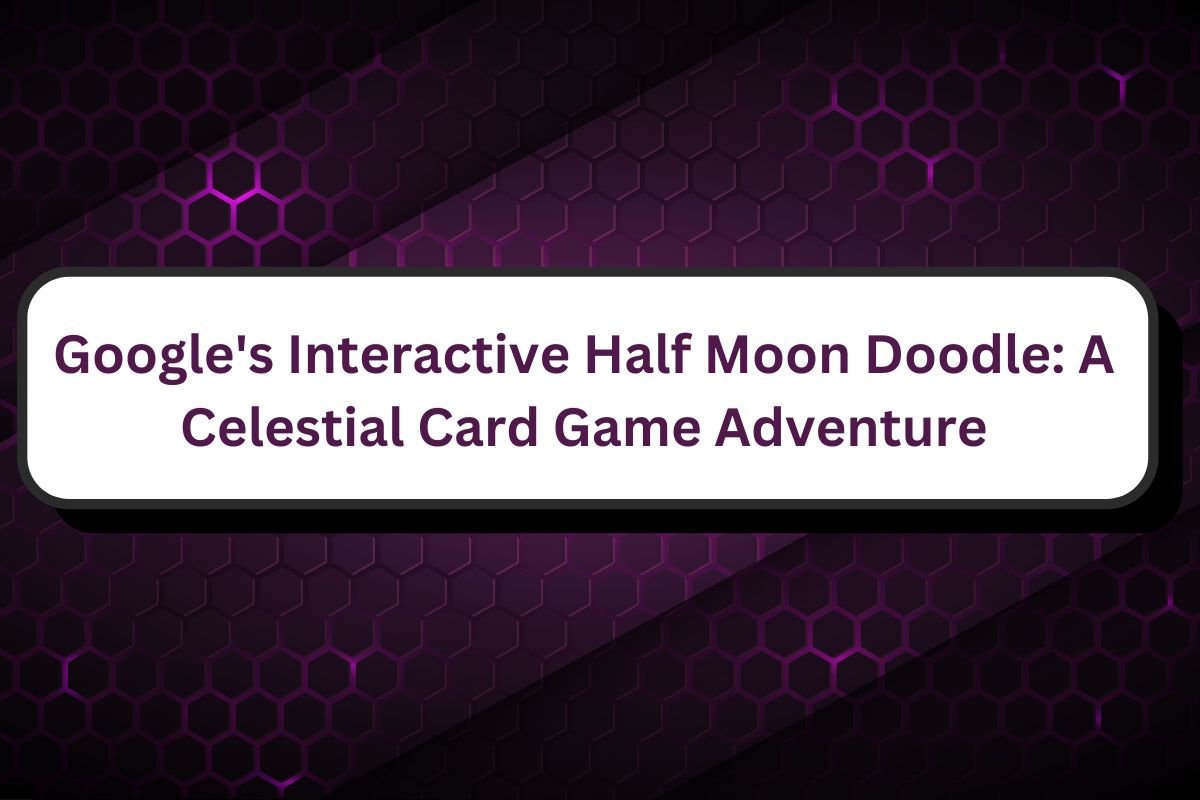Google has transformed its homepage into an interactive celestial experience with a specially designed doodle game celebrating December’s final Half Moon. Launched on December 22, this engaging creation combines entertainment with educational elements about lunar cycles, offering users worldwide a unique way to explore the moon’s phases.

A Game of Lunar Phases
The interactive doodle challenges players to demonstrate their knowledge of lunar phenomena through an innovative card-matching system. Players must strategically pair different moon phases, creating either full moon combinations, phase pairs, or complete lunar cycle sequences of three. This gameplay mechanism cleverly reinforces understanding of the moon’s natural progression through its monthly cycle.
Understanding the Lunar Cycle
The moon’s journey through its phases spans approximately 29.5 days, encompassing eight distinct stages:
- New Moon
- Waxing Crescent
- First Quarter
- Waxing Gibbous
- Full Moon
- Waning Gibbous
- Third Quarter
- Waning Crescent
Accessibility and Global Reach
The doodle’s accessibility stands out as one of its key features. Players can easily access the game by visiting Google’s homepage on any device, whether using a smartphone or computer. Upon reaching the search page, users encounter an enhanced Google logo featuring a distinctive lunar design. A simple click initiates the gaming experience, making astronomical education readily available to millions worldwide.
Additional Features and Resources
Beyond the core gaming experience, Google has provided supplementary content for lunar enthusiasts. Users can download exclusive Half Moon Rises wallpaper directly from the website, extending the celestial experience beyond the game itself. This follows Google’s successful previous lunar-themed games from October and November, maintaining a consistent theme of astronomical engagement.
The Evolution of Google Doodles
This lunar doodle represents a significant advancement in Google’s tradition of creative homepage modifications. Since the first doodle appeared in 1998 – a simple out-of-office message for the Burning Man festival – these digital artworks have evolved substantially. The introduction of international doodles in 2000 with France’s Bastille Day celebration marked the beginning of global engagement, while the first interactive game doodle, celebrating Pac-Man’s 30th anniversary in 2010, pioneered a new era of user engagement.
Educational Impact
The Half Moon doodle exemplifies Google’s commitment to educational entertainment. By combining gaming mechanics with astronomical concepts, it creates an engaging platform for learning about lunar phases. The interactive nature of the experience helps users retain information about the moon’s cycle while enjoying the challenge of matching correct phase combinations.
Global Accessibility
Available across different time zones and regions, this doodle demonstrates Google’s ability to create universally appealing content that transcends cultural and linguistic barriers. The simple yet effective game mechanics ensure that users worldwide can participate in and learn from this unique celestial celebration.

Leave a Reply